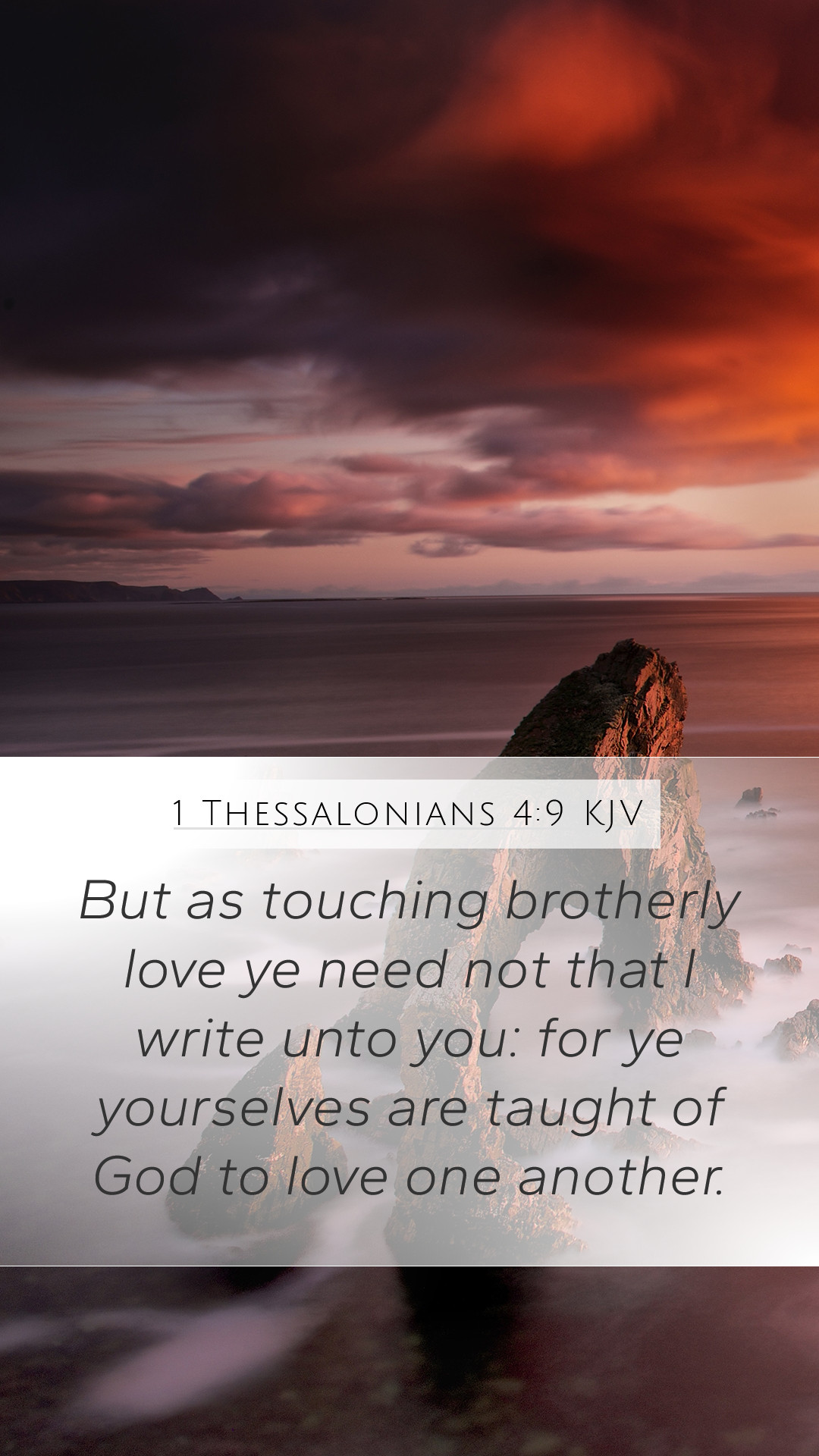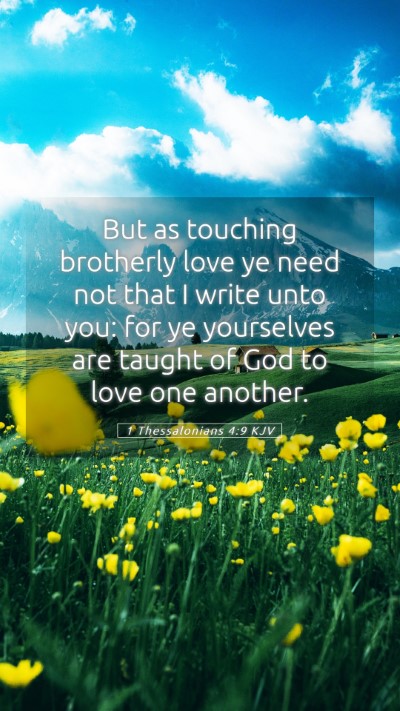Understanding 1 Thessalonians 4:9
1 Thessalonians 4:9 states, "But concerning brotherly love you have no need that I should write to you, for you yourselves are taught by God to love one another." In this verse, the Apostle Paul addresses the church in Thessalonica, emphasizing the importance of love among believers.
Summary of Insights
This verse highlights key themes regarding brotherly love and the divine instruction believers receive about loving one another. Drawing from the insights of notable Bible commentators like Matthew Henry, Albert Barnes, and Adam Clarke, we can examine the verse in detail.
Matthew Henry's Commentary
Matthew Henry emphasizes the idea that love is an inherent quality taught by God, suggesting that every Christian community should naturally express love without needing explicit reminders. He interprets "brotherly love" as a profound bond among believers, stressing that genuine love reflects God's nature and the guidance of the Holy Ghost. Henry notes that this love should be active and demonstrated through actions and support for one another.
Albert Barnes' Commentary
Albert Barnes explains that Paul acknowledges the Thessalonians’ progress in understanding brotherly love because it originates from God. He points out that no external admonition is needed because believers are innately aware of their duty to love each other, having received this command through the teachings of Christ. Barnes interprets the phrase "taught by God" as indicative of the transformative power of the Holy Spirit, which instructs believers in moral living and nurtures their capacity for love.
Adam Clarke's Commentary
Adam Clarke elaborates that Paul indicates the scope of love that believers should practice is not only toward fellow Christians but also extends to all humanity. He argues that understanding and acting upon this love is crucial for the church's witness to the world. Clarke's interpretation suggests that love is a fundamental aspect of Christian conduct and requires both personal reflection and communal expression.
Key Themes and Applications
- Divine Instruction: The verse signifies that love is a command that comes directly from God, showing that it is not merely a human principle, but a divine expectation.
- Innate Understanding: The expression "taught by God" implies that every believer possesses an intrinsic understanding of how to love others, leading to the idea that Christians should naturally embody love.
- Action-Oriented Love: True love manifests through actions. It encourages participation in the needs of the community, fostering strong interpersonal relationships among believers.
- Wider Implications: The call for brotherly love extends beyond community boundaries, urging believers to exhibit love toward all people, reflecting God's universal love.
Bible Cross References
- John 13:34-35: Jesus commands His disciples to love one another as He has loved them.
- Romans 13:10: Love fulfills the law, emphasizing its central importance to Christian ethical teaching.
- 1 John 4:7-8: The apostle John states that love is from God and that anyone who loves is born of God.
Conclusion
In seeking the meaning of Bible verses like 1 Thessalonians 4:9, it is evident that love is a critical theme in Christian life, taught and exemplified by God. Through Bible study insights and commentary on scripture, believers can gain a deeper understanding of how to embody brotherly love in their daily interactions. This verse contributes significantly to the larger discourse on love in the scriptures.
Further Study
For those engaged in Bible study courses or online Bible study groups, reflecting on this passage through the lenses of different commentators can enhance your Bible verse interpretations. Consider how the instruction to love can be applied in practical ways within your community and how it shapes the identity of the Christian faith.
As we seek to understand difficult Bible passages, let us remember that the significance of Jesus' teachings and the call to love remain central to our spiritual growth and community building.


